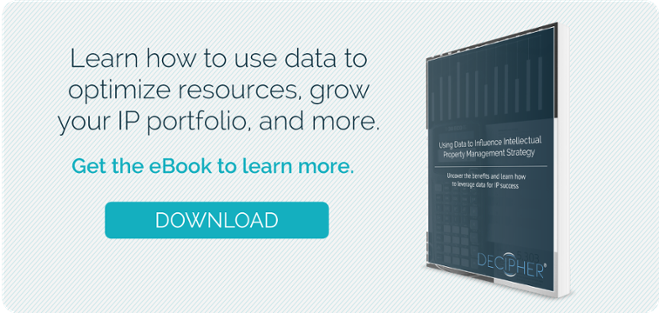Performing an internal intellectual property (IP) audit is vital for businesses hoping to maintain visibility into the revenue and expense attributed to their IP portfolio. According to the World Intellectual Property Organization (WIPO), formal IP audits should be conducted both during pivotal events for the organization, such as a merger, and in response to internal changes in strategy, personnel, etc. However, it is a good idea to perform regular reporting and “informal” audits to ensure production and innovation efforts are measuring up to the organization’s overall strategy, too. Regardless of the type of IP audit, there are a few important characteristics to analyze that act as indicators of success for IP Management.
What to Look for in an Audit
IP Use
Identify existing IP that’s in use by your organization. How are the assets used? Are they fundamental components to other products or services? Are they used internally and incorporated into departmental processes? After taking inventory of these assets, be sure to come full circle and answer whether or not the IP is being used in accordance with the innovation and business strategy of your organization.
IP Ownership
There is often a blend of internally-produced IP and IP that has been licensed from a third party. Collect information on who owns each asset, then look one level deeper and determine the costs and revenues associated with them. There may be opportunities to license out your own IP and create a new stream of income, or there may be under-utilized IP that can be dropped from the portfolio and trimmed from costs.
IP Infringement
For any licensed IP, is your business complying with usage rights? List any red flag risks present in your portfolio during the audit to avoid penalties later on. Additionally, take note of any original IP that is being used by third parties and determine if they’re complying with your own license requirements so as to avoid any missed revenue.
Lifecycle Stage
Finally, review what innovations reside in development, what’s been submitted for patent review, and what’s recently been added to the list of patents under your organization. Managing your IP pipeline will be useful for forecasting and setting goals – which will be measured for success at the time of the next audit.
Now that you know what to look for, let’s review how IP management software can help facilitate the audit process.
Your IP Management Software
Asset Development Progress
It’s important to come away from an IP audit knowing what’s coming next in terms of management costs, necessary resource allocation, and the emergence of new revenue streams. When your organization relies on IP management software for invention disclosure and review, all progress toward introducing new IP will be available through that software. Reviewing pipeline will also be important for identifying if there are strong opportunities that can be prioritized first to facilitate deployment, as well as the need for intervention by senior staff or employees from another department, like legal.
Assessing Portfolio
With the right IP management software, you can take a bird’s eye view of your entire IP portfolio. By having every asset laid in front of you in a central repository, you’ll be able to gain context for each IP asset, including their association with products, licenses, and personnel. Identifying and estimating costs and returns becomes a far simpler task when all of that information is immediately available for review and categorized on an asset-by-asset basis.
In addition to visibility into your IP’s usage, you can also gain insight into reports that readily display progress toward pre-defined goals. Leveraging this reporting makes identifying productivity roadblocks and bottlenecks, and overcoming them, easier, while also making auditing a breeze. You no longer need to make inferences regarding where you need to focus next – it’s clearly laid out before you.
Reviewing Legal Spend
Legal spending is going to be one of, if not the, largest expenditures for your organization when it comes to IP management. Organized by law firm, lawyer, type of legal work, and asset, you can assess your spending through your IP management software and see if paying to protect your assets is providing an appropriate level of return. Some software even allows you to directly integrate billing, which would provide the auditor with complete and immediate transparency into expenses per asset. Post-audit, all of this information can be used to judge whether the organization should maintain their current legal relationships or reevaluate them to find more cost-effective services.
Conclusion
Performing an IP audit can be a challenge without the right tools to accomplish it, creating a tendency to put them off… which only further complicates IP management. With IP management software, however, the challenge is much less imposing. When you can easily pull the data on costs, ownership, and performance of your IP, audits and subsequent management are much easier to execute. To get a better idea of how data can impact the full IP management process, download this free eBook and learn how you can gather that data in one place.


